LARPing Ethereum: a Look into NFT Value from Interoperable Utility
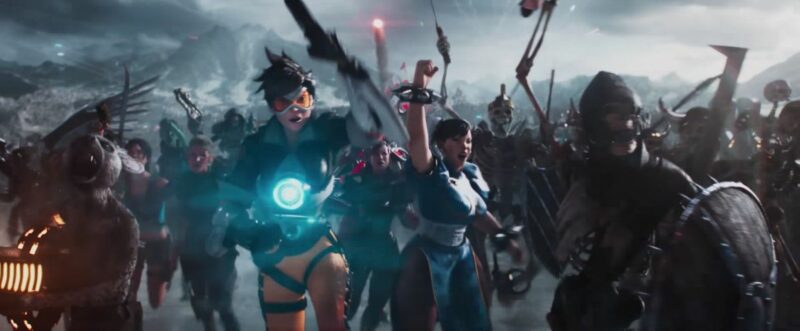
GCR is a Tokenized Community of Researchers and Investors in the crypto space. Join our community today to get access to all the best investments ideas and deal flow, workshops and direct access to founders and key players in the space.
You will need 100 $GCR tokens to join the Discord-members channel. You can purchase the token on Uniswap here and join the gated Discord group here.
How do we get value from NFTs beyond clout-based value? You can explore value from interoperability along the context of differentiated wallet-based addresses.
Interoperable Utility
NFT value can be derived from its utility through interoperability among metaverse applications
Address LARPing
An Ethereum address is your avatar
Interoperable Utility
- [Utility] Non-fungible tokens (NFTs) can derive value from demand generated by its utility.
- [Interoperability] The utility of an NFT can be augmented from its interoperable use on multiple applications in the same or different metaverses
- [Coordination] An NFT’s interoperable utility is a coordination and implementation matter among applications in metaverses
- [Lore] An NFT may be selected because of its lore and significance
Example
Analogy (Ready Player One Metaverse):
Let’s use an example from the popular novel (and movie), Ready Player One.
- [Metaverse] There exists a metaverse (the Oasis)
- [Applications] There exist multiple applications on that metaverse (for example: Halliday’s Easter Egg Hunt [racing game, maze/treasure hunt], p2p battles)
- [NFTs] There exist special items that imbue benefits to characters to use interoperably on multiple applications
- [Lore] There exists special lore and significance for each of these items that thus prove it’s selection for utility

What this can hypothetically look like on the blockchain:
- [Metaverse] The SandBox is a blockchain-based metaverse
- [Applications] Within the SandBox metaverse there are multiple games/applications and let’s say 3 of them are: a racing game, a maze game, and a battle arena
- [NFTs] There is a cryptopunk NFT that can be used by your character on all 3 of these games that confer special and distinct benefits
- Racing Game: within the race, the cryptopunk NFT manifests itself as a hanging decal on your rearview mirror of the car you use. It gives you +10 horsepower.
- Maze/Treasure Hunt: within the maze/treasure hunt, the cryptopunk NFT manifests itself as a mini companion that walks around with you and alerts you whenever you’re close to an exit or treasure along the way.
- Battle Arena: within the battles, the cryptopunk NFT manifests itself as a necklace that hangs around your character’s neck. It gives you +10 hp.
- [Lore] Let’s say, in this hypothetical situation that this particular cryptopunk NFT has such values because let’s say it has a special and even extreme history and lore attributed to it. Let’s say for example, it was one of the first 5 cryptopunk NFTs and had been involved in a phishing scam where it was stolen and then later recovered from a physical police raid in which the culprit eventually gave up the keys to the stolen cryptopunk. It later then passed through Vitalik’s hands and was finally gifted to its current owner. The legend and lore of the cryptopunk is retained and respected with certain attributes on those different applications/games.
(another way to simply look at this concept that I like to use a lot. Let’s say I have a plain old chopstick. As it stands, it is relatively cheap and almost worthless. But if that chopstick were to have been used to kill Hitler, then its historical significance [and positive contribution to society] imbues it much value)
Address LARPing
One platform hosts multiple applications.
Each application chooses to:
- use existing platform resources
- create their own siloed resources
In a virtual world, you interact with applications using money, property, and items. Here are some ways it can look:
- [Siloed] An application requires you to interact with it naked (without any of your existing external property, items, or money; you can only use what it gives you)
- [Completely Open] An application allows you to interact with all your stuff, unequivocally
- [Partially Open] An application allows you to interact with only some of your stuff
- [Equivalent Exchange] An application allows you to interact with your stuff only when transformed like for like (external to internal swap)
We already see this on Ethereum.
Ethereum is the platform.
The Ethereum address you use is your avatar.
The tokens and NFTs are your gear.
The contracts, DAOs, dApps, and games you interact with are different realms.
In some form or another, we’re all LARPing on Ethereum–with one or many of our pseudonymous addresses. You may have an address specifically for yield farming, a different one for collecting NFTs, another specifically for DAO governance, and on and on.
Each application sees only what it needs to see for its specific function. A DAO only cares about your governance tokens for your voting, yield farms only care about its “crops”, an NFT art gallery only scans for your art NFTs.
Therefore:
- Some DeFi applications see us only as farmers.
- Some games see us only as NFT monster battlers.
- Some applications see us only as art curators.
- Some applications see us only as hedge fund managers.
- Some applications see us only as financial market makers.
- Some applications see us only as politicians.
- Some applications see us only as traders.
Each avatar (address) carries its story publicly. Its full history; the paths it has taken. It wears it publicly for all to see on its proverbial sleeve (the blockchain).
The calluses of yield farming’s astronomically high gas fees during DeFi summer 2020, the collection of art it has purchased along the way, the NFT monsters and pets it holds in reserves, and its political bent from the public votes it has cast. It may show stories of getting front-run on DEX trades when just starting out. Blunders of sending money to the black holes of token contracts while trying to claim airdrops. Its first successful arbitrage trade while getting the hang of things and fortuitous chance encounters of stumbling upon a new project that multiplied its wealth tenfold.
What is your ethereum address?
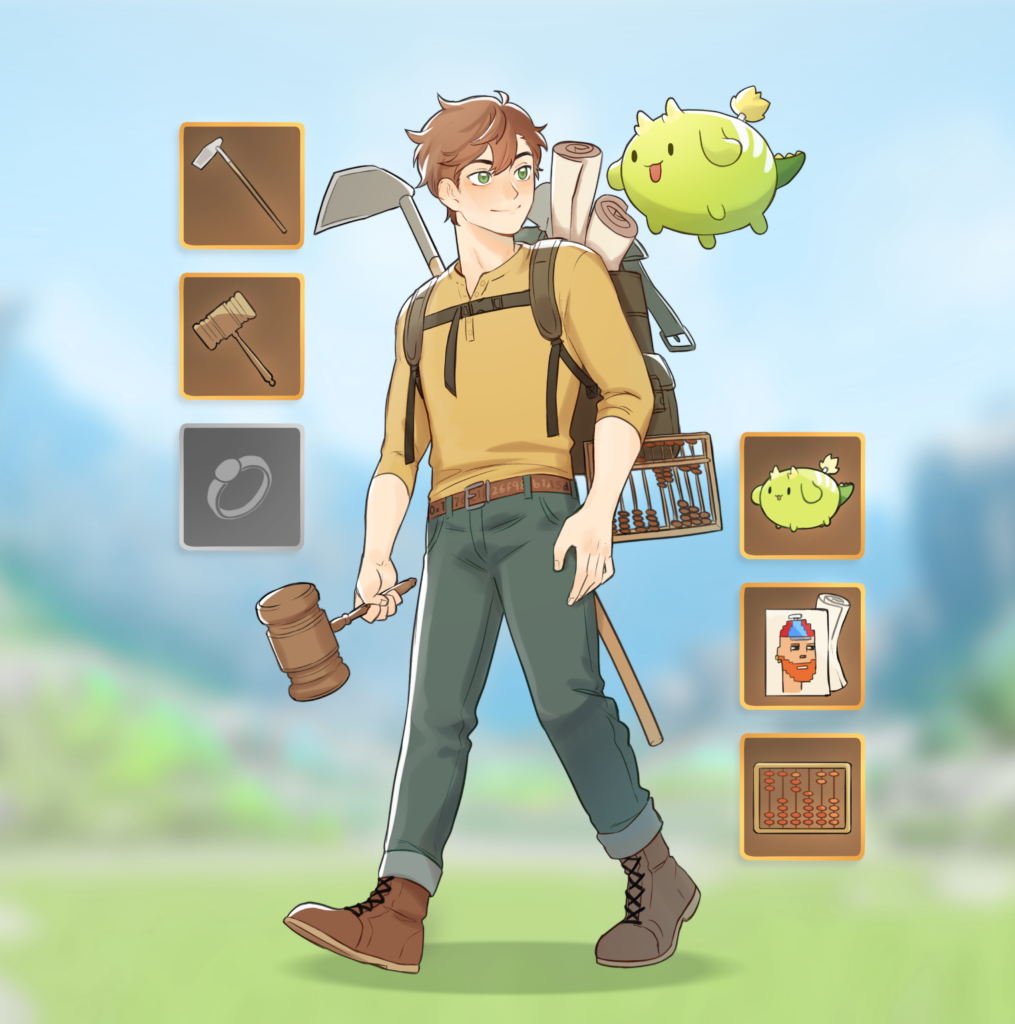
Maybe you in particular use a single address to yield farm, collect NFT art, battle NFT monsters, and vote on DAOs–a balanced avatar.
Maybe you have many addresses that exclusively interact with different applications depending on its function. One for collecting NFT art. Another for yield farming. Another perhaps holds non-trivial power as an active voting member on DeFi governance. It’s essentially a guild with specialists. You control and spawned all these addresses with the seed phrase you began with. You are the guild master.
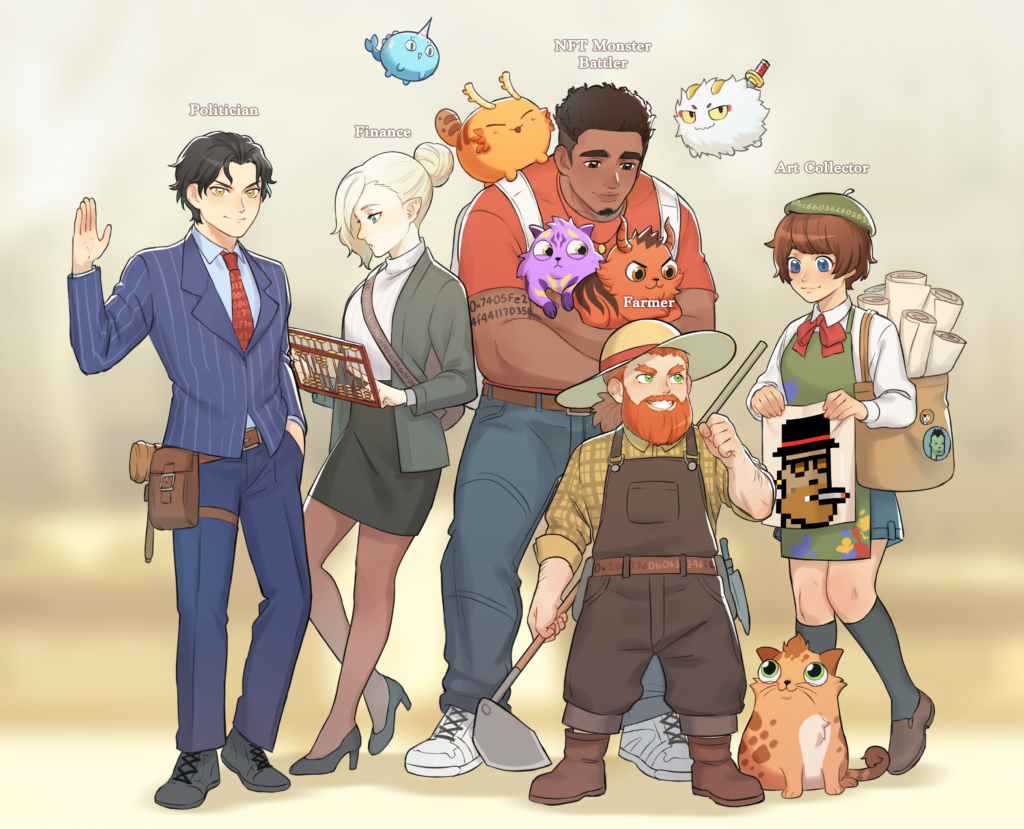
(Truly?) Open Applications
We already see glimmers of interoperability between applications from the base layer of Ethereum. Liquidity providers on automated market maker-based decentralized exchanges are rewarded for their service and get elected to govern those very same platforms from governance token airdrops. Some applications employ indexers to pull on-chain application data on different applications unrelated to it to provide services to yet more distinct applications. Other applications provide pseudo-pawn shops for NFT collectibles and others, formalized lending platforms accepting external collateral for assets of its own or yet more different assets.
Let’s take the “farming kingdom of Cronje”–YEARN’s ecosystem of DeFi plug-and-play–the power of composability: yield farming optimization through the seamless switching of lending providers from dYdX, Aave, and Compound under the yearn.finance umbrella; protocol insurance plugged into its ecosystem underwritten by Nexus Mutual; liquidity expansion from PowerPool’s PowerIndex; and “mergers” to consolidate potential redundancies in specialty–namely the Pickle Finance partnership.
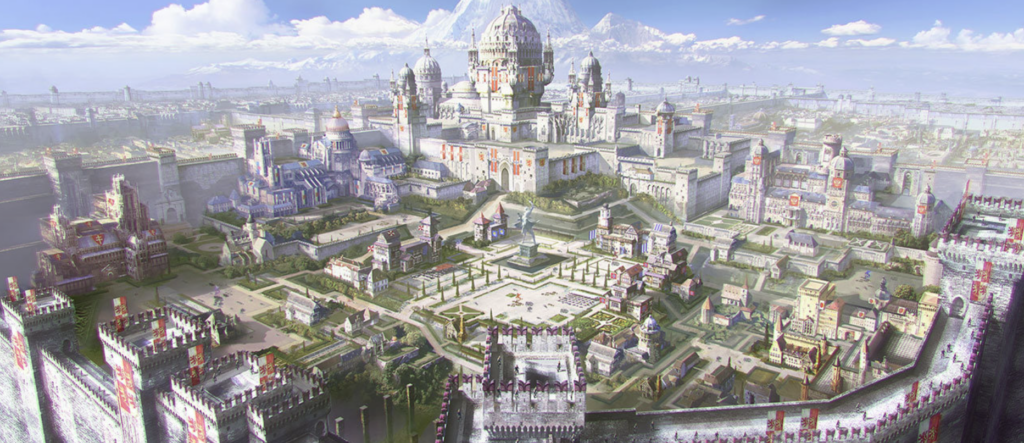
The success of “Cronje’s farming kingdom” provides proof of this concept for application interoperability and composability–a working template of how interoperability provides value to the comprehensive sum of its aggregated DeFi application parts.
Other similar farming “encampments” have already begun hitching their own proverbial wagons to each other. There are even a few subtly centralized examples (which is an unfortunate byproduct of some builders losing sight of the entire point of all of this). Having truly decentralized and open applications on a decentralized and open platform must allow for unstoppable interoperability.
These are, after all, possible without permission. They are open protocols, open-sourced contracts which are all free to become templates, inspiration, and plugged in where necessary. The boundaries are publicly blurred.
However, by applying the concept of interoperability and composability with NFTs, we’re faced with questions of practicality. We have an open platform and applications: NFT platforms, art, galleries, games, and even financial commoditization (but let’s focus on the world of art and gaming for now). Some are completely open but some are not. Each lives on the same blockchain platform, but some remain siloed and can only exist within their own boundaries and rules.
Specifically with NFT-based games, it brings up a very interesting question. Most games are closed for very important reasons. There are carefully tuned game-dynamics that exist to render gameplay enjoyable–breaking that dynamic results in poor experiences. So, do truly open games or applications with regards to NFT collectibles really make sense?
Universe Building
The utility of NFT art and collectibles can provide significant value in their interoperability within the various applications they are integrated into.
Through interoperability, NFTs can cross through bridges between applications. These bridges expand the surface area and addressable markets of the applications beyond their own borders.
Interoperable NFTs therefore have value through utility in their use among many applications.
Many applications find value from the expansion of their addressable markets.
A great example is Cryptomotors.

Leandro, the co-founder of Cryptomotors, has embraced this universe building interoperability thesis head-first. Cryptomotors cars are NFTs that can be used on different metaverses from the get go with differing levels of detail (LOD). As an example, you can own a Cryptomotors Abyssus NFT that represents the car (pictured above). You can race it against other players on Cryptomotors’ own platform and you can also use it on other metaverse platforms as well–from Sandbox to Cryptovoxels to Somnium and to wherever else. Your Cryptomotors car will look “voxel”-ated in the Sandbox and Cryptovoxels metaverse while it will look as sleek as shown here in Somnium or Decentraland.
Despite the varying levels of detail, your Cryptomotors car is just one single NFT. Think of it as traversing between parallel universes. You own a Cryptomotors car in Somnium in its sleek finely detailed shape, but you can jump on over to the Sandbox metaverse and now it looks pixelated. You are still you. Your Cryptomotors car is still your car.


Your ethereum address is your avatar. The NFTs you hold are your gear. The different metaverse worlds are just parallel universes. And you can traverse them all as you will with your gear–given how the different metaverses handle their borders…
Hermit Kingdoms
External NFT encroachment into an application’s own internal set of NFTs is a point of contention. Certain games and applications are created siloed and closed with their own carefully set rules. That can’t be helped. After all, why would an existing application or game that imbues value to its own set of internal NFTs want to worry about external NFTs taking away value?
I believe this is a question of the game’s or application’s developers. It is also a question of how existing development and future development can be done. Integrating existing games and dynamics with other games or applications requires retrofitting and is a top-down approach of coordination. However, the development space is vast, you can build games and applications from the ground-up to be interoperable from day one. It makes sense that the direction of NFT value generation and accrual lies in interoperability and we should see more applications and games either integrate interoperability or have it from day one. Adapt or die.
Universe Plumbing
So, if a particular set of metaverses do not set themselves up as hermit kingdoms and isolate themselves from the rest of the universe, how can interoperability work? What should it look like?
Continuing the parallel universe (or metaverse) analogy, let’s say I am an Axie monster battler living in the Axie Infinity metaverse but I want to now head over and travel to the Cryptokitties metaverse (fictional for now until Flow builds one on Ethereum) for the first time. What does continuity look like here?
If both metaverses adopt a hermit kingdom isolationist approach even though being built on the same Ethereum platform, then I would be starting over from scratch. If I had a trusty pet Axie in the Axie Inifinity metaverse, I would arrive in the new Cryptokitty world without anything. Of course there are limits to the interoperability of both worlds, but it doesn’t mean it cannot be done. Yes, perhaps I use the same avatar (ethereum address) to interact with both metaverse worlds, but there is no compatibility.
If both metaverses somehow adopt a completely open approach, then should I in fact be able to travel over with my gear? Why shouldn’t I? Just as with the Cryptomotors approach, two worlds can be completely different–even down to the granularities of the levels of detail–pixelated (Sandbox) vs smooth definition (Somnium). But my Cryptomotors car is still my Cryptomotors car in any metaverse world I choose to visit. My assets are still my assets.
Truly self-sovereign NFT ownership, use, and utility are interoperable.
In the Cryptomotors case, we have an external 3rd party NFT asset that is imported into different metaverse worlds. In this hypothetical Axie <-> Cryptokitty metaverse world traversing, we have native NFT assets movement to enable universe continuity.
So how might metaverse world traversal work under the hood? The goal is to maintain this universe continuity to provide immersion. If I own an avatar (my Ethereum address) and want to maintain ownership between the different metaverse worlds (both built on top of Ethereum) I travel to, how could that be possible? An Axie can’t live in the Cryptokitty world and neither can (or should?) a Cryptokitty live in an Axie world.
Interoperability Wormholes
Use an NFT index! NFT indexes like NFTX and NFT20 brought liquidity to the previously (and notoriously) illiquid NFT marketplace. Let’s use it as a lego piece in a hypothetical scenario for connecting two metaverse worlds.
Let’s set this hypothetical stage:
- 2 metaverse worlds built on the same Ethereum platform : Axie world and Cryptokitty world
- Both gameplay mechanics include owning a pet/monster and battling it
- One avatar (your ethereum address)
In universe continuity with interoperability there should be fundamental base attributes or ownership that is shared or maintained. If I am in Universe A with a gold wristwatch and travel over to Universe B, I should still hopefully have my watch. Perhaps it’s not gold and perhaps it’s not wrapped around my wrist but rather hanging from my pocket as a silver pocketwatch, but it is still a watch that tells the time and it is still in my possession. Universes may be different, but there are still fundamental things about myself and what I own that stay with me.
If two metaverse worlds are built on the same platform why not have the ability to traverse any world on the same platform with the stuff you have? The Cryptomotors example of having an independent 3rd party NFT asset be used on multiple different metaverse worlds (Sandbox, Cryptovoxels, Decentraland, Somnium Space) can be thought of as vertical interoperability. You have NFT assets owned by your avatar’s Ethereum address traversing the different metaverse worlds.
How about horizontal interoperability? In the stage we’ve set, we have the Axie and Cryptokitties worlds with similar gameplay mechanics and one Ethereum address avatar. Let’s say we have a desire to not need to start over from scratch when entering a new world. Starting over from scratch could be in effect the equivalent of starting out with full gear (shirt, pants, shoes, hat, weapons) and your battle monsters in tow in one world and stepping through a gateway to the other world completely naked with nothing.
So to keep continuity (aka keep your own stuff while traversing worlds), you could build upon NFT indexes to act as bridges or wormholes between two worlds. With attempts at equivalent exchange, if I have 3 Axie monsters and I move into the Cryptokitty world, I could have 3 similarly featured cryptokitties. Maybe it would be that I have 1 rare Axie and 2 common Axies. I would then end up with 1 rare Cryptokitty and 2 common Cryptokitties. The exchange equivalency can be determined by the users or the metaverse worlds themselves.
Using an NFT index, you could build a rough atomic swap type mechanism with guaranteed borrow limits! Create NFT indexes of specific value on both sides of a bridge connecting two metaverse worlds. In our example, there would be a rare Axie NFT index and a common Axie NFT index with the equivalent rare Cryptokitty NFT index and common Cryptokitty index. So, the process could look like this:
You prepare to travel over to Cryptokitty world from Axie Infinity.
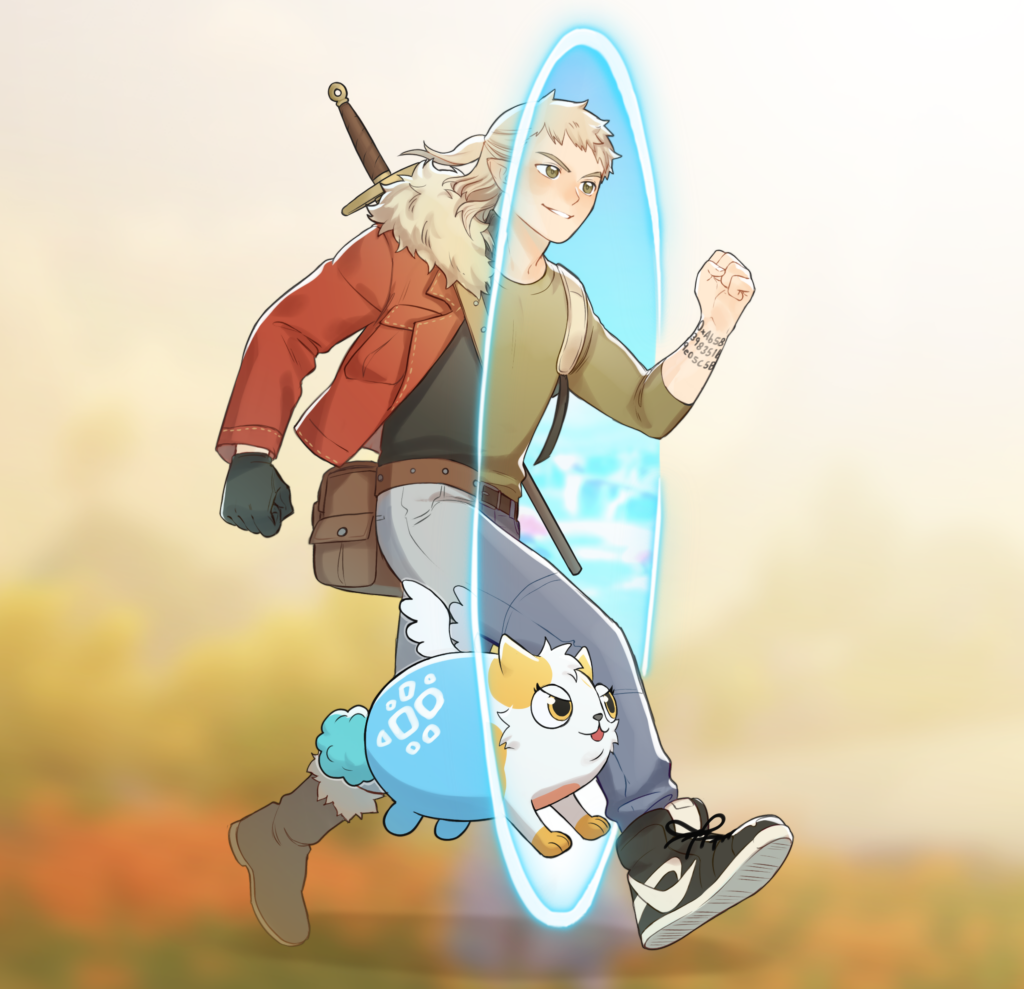
Axie world
- You have your 1 rare Axie and 2 common Axies
- You lock up your 1 rare Axie into the rare Axie NFT index with a guaranteed escrow limit
- You lock up your 2 common Axies into the common Axie NFT index with a guaranteed escrow limit
Cryptokitty world
- Someone else has 1 rare Cryptokitty and 2 common Cryptokitties
- This person locks up his 1 rare Cryptokitty into the rare Cryptokitty NFT index with a guaranteed escrow limit
- This person locks up his 2 common Cryptokitties into the common Cryptokitty NFT index with a guaranteed escrow limit
When you step over into Cryptokitty world, you pick up an equivalent 1 rare Cryptokitty and 2 common Cryptokitties! A somewhat rough and janky equivalent exchange! Meanwhile, as you are frolicking about in Cryptokitty world, your Axies that you checked into their relevant NFT indexes are now available for the same use for someone traveling into the Axie Infinity world from the Cryptokitty world! Now, the specifics can be as detailed as you want. For example, you can set it so that you can only select specific Cryptokitties in the index that have the same time limit as the ones you checked in on the Axie side to guarantee that you’ll immediately retrieve your Axies when you return.
As NFT indexes had provided an important step for NFT liquidity, these NFT indexes can also be important in providing time limit liquidity for the borrowing and checking in they will facilitate during these metaverse interoperability traversals by users and players! Now, with the newfound utility that your NFTs have in not just one siloed world, but in many, you have a case for NFT value from its interoperability in metaverse worlds!
NFT indexes with borrow mechanisms built on top can be explored in a variety of different ways. Full function of these bridges or wormholes would ultimately be based on how open and interoperable the metaverses would like to be. In my opinion, metaverses will ultimately be filled with interoperability as there are far more interesting and valuable opportunities for collaboration. Siloing yourself would be a death sentence. Adapt or die.
These interoperability NFT wormholes or bridges can be temporary, special events (like crossover events) in the beginning and can eventually be established permanent ones as enough time and testing passes! There can be independent bridge operators that handle different sets of NFT indexes for borrowing and lending NFTs as players wish to pass through metaverses. Liquidity, as always, is king for these bridges. Liquidity mining can even be used here to incentivize the lending (or checking in) of your NFTs to be used for interoperability!
The Road to Many Paths
NFT value can indeed be augmented from the utility that it can have from its interoperability in metaverse applications. But how we can get there can be myriad. What is also fascinating to think about is what now happens when we have full (or easy) interoperability.
Hermit kingdoms and isolationist policies have existed throughout history for various reasons. Most of these reasons have involved protectionism and conflict avoidance. If virtual metaverse borders get opened up, you open up the floodgates of constructive and value additive collaboration as well as conflict.
What happens if a metaverse is governed by governance tokens?
Could the Cryptokitty metaverse world wage war on the Axie Infinity metaverse world? Would it look like a hostile takeover through aggregating over 51% of governance tokens? Would it look like a user vampire attack if one metaverse world is more fun or lucrative to play in?
Conflict between metaverses through interoperability could create a sort of Nolan Sorrento Effect. You would have NFT or Metaverse war games. Here, significant NFTs can hold not only just power in their interoperability, but also power in governance of applications/games and metaverses. You might see guilds can form around NFT collections that are valuable and allow shared use for members of the guild. You might see guilds or funding entities (like the Ready Player One IOI) back teams/individuals with certain NFTs to go do specific actions on behalf of them.
Final Thoughts
In summary, this was just supposed to be a quick little writeup on NFT value that was supposed to just be one page that ballooned into more fun thought experiments as I shared it casually with friends and got their feedback. But now, if you’ve made it through this monster, there are some pretty neat examples and ways of looking at the state of our NFT, metaverse, and interoperability ecosystems!
I will also have to acknowledge that the majority of current high profile NFT hype is clout based. You have a certain celebrity or vocal minority claiming some art or collection is cool and they’re paired with high profile auctions and transactions. That’s totally cool. Clout-based value has a firm place in how value is measured. For example, in the traditional world, Supreme hypebeasts will pay $1000 USD for a box logo shirt because it means something to them.
But there are also far more interesting experiments we’ve seen provide value to art, experiences, and gameplay. A favorite piece of mine is of Pak’s 9 piece collection called “The Title” by trent e which dives into how value is perceived and set through the identical looking images with different prices and different names. Kevin Abosch and Ai Weiwei even investigated NFT-esque value with their “Priceless” collection of ERC-20 tokens with limited transfer rights, unique and named transaction hashes, and physical collectible prints.
Bringing in more experiments, more exploration, and more decentralization of thought on how NFT’s can be valued is important. Diversity of thought, particularly with the technology we’re pairing it with, is a meaningful and essential way of showing what can be done. The properties of self-sovereignty and robust guarantees of authenticity via the blockchain are powerful for digital rights management, art, ticketing, experiences and more. We need more of this on a global level.
NFTs have proven themselves to be that ‘killer app’ that has effectively brought in everyone from independent artists being discovered for their brilliant works to high-profile celebrities like Mark Cuban, Gary Vee, Paris Hilton, RAC, and Logan Paul. It would be a shame if all we had to show for this technology that provides strong promises of self-sovereignty, rent-seeker elimination, censorship-resistance, decentralization’s corruption resistance, and global exposure was just a limited handful of experiences. There are so many more cool ways of exploring NFT value–we just need to explore them!
Notes and Comments
- Non-fungible tokens (NFTs) can derive value from the demand generated by its utility.
Each NFT’s utility is potentially limitless, as each application in the metaverse can utilize the same NFT for a different utility within it’s game/world.
- The utility of an NFT can be augmented from its interoperable use on multiple applications in the same metaverse
The term ‘metaverse’ here can literally mean a world building metaverse like The SandBox or Cryptovoxels. A ‘Metaverse’ can just as easily mean an existing platform like Ethereum that allows for applications to use such NFTs interoperably.
This interoperability enables the Total Addressable Market (TAM) for an NFT to expand at the same or similar rate of the overall market expansion of the metaverse it is in (TAM for the NFT is not specific to the sector it is in) [SB]
Also, what’s the reason for already successful games to implement NFTs? I don’t see a ton of good reasons a private interest group would give up control over their items + monetary policies.[JK]
- Soft
- Applications built from the ground up to be based around a reference NFT set.
- Forceful
- Existing applications/games (with community governance ability) have ‘hostile takeovers’ from the community to forcefully integrate that application/game into the reference NFT set. (would not be surprising if this can already be done with the NFT whale cartels we see today or existing dapp whales)
- An NFT’s interoperable utility is a coordination and implementation matter among applications in a metaverse
Coordination here can simply be agreement of integration from application/game architects to set specific NFTs giving application/game augmenting attributes. How this integration is decided by architects may just as well be their sole responsibility on how they want their application/game experience to be. It may well be that certain NFTs with overpowered attributes may break application/game experience. However, the architects may see value here to add these augmenting NFTs for additional experiences for players (“spicing things up” for enhanced gameplay, difficulty adjustments, re-balancing/nerfing). Such NFTs that hold certain attributes may also provide marketing/earning potential through in-game economies and marketplaces. If you use certain NFTs in specific games, you may have chances to unlock certain features or gain additional experience/rewards.
NFTs also allow for easier market expansion. E.g. supporting Cryptopunk NFTs within your game opens up your player base to the entire Cryptopunk market. Similar to SaaS, where if an application integrates with Salesforce they significantly expand their immediate addressable market to all Salesforce users. [SB]
NFTs allow builders to target niche demographics with laser accuracy and basically no advertisement costs 😀 [AG]
Actionable Insight: Coordinate application/game architects and specific NFT sets to establish a set of interoperable utility integration. (for example, cryptopunks #1 – #100 with their various attributes will be used as character attribute boosters among 3 applications/games in a metaverse)
- A particular NFT’s selection for interoperable utility can be manifold
The choice by application/game architects on which NFTs will be imbued with certain attributes on their application/games can either be:
- New: Create application interoperable NFTs specifically for purpose
- Existing: Select existing NFTs and imbue them with attributes. Using existing NFTs helps narrative in that current generations of NFTs are building their history currently. Legend/lore building.
At this point in time, each metaverse/game developer will incorporate their own NFTs and not external NFTs into their gameplay yet. The reason they accept their own NFT is because they sell NFTs to fund their ops. Will be interesting to see a situation in the future where a game accepts various other NFTs and they can find a way to monetize in another way [BO]
If application/game architects were to choose from existing NFTs, it should likely be done from NFTs that have appropriate significance. Significance can be drawn particularly from history, lore, legends, stories, and its passage through time (provenance). These stories and histories in and of themselves provide value to art in the traditional realm of collecting and naturally flow to that of NFT art. Adding the historical provenance that blockchains provide further strengthens historical verifiability. Currently, NFT art and collectibles are going through its legend building phase. The legends and lore of specific NFTs provide prime candidates for use in interoperable utility for metaverse application/games.
Using provenance to tell a story, and therefore deriving a value from that story is a natural and powerful concept that draws from existing valuation and art valuation to the NFT ecosystem [SB]
Gauging the appropriate significance of a specific NFT collection is based on both it’s potential utility value as well as it’s cultural value. The decision of adopting an NFT within a given game/world will vary from NFT to NFT and be dependent on finding the right balance it can provide to the ecosystem from cultural and utility standpoint. [SB]
Actionable Insight: NFTs are going through a legend building process. We can coordinate which NFTs are significant to be integrated for interoperable utility with metaverse application/game architects.
Also, just want to give a shoutout to all those who reviewed and helped either provide commentary or got me to finally push this out after months! Way too many names and eyeballs have seen this to list everyone. I thought about listing everyone, but I think it may have been a bit too pretentious.












